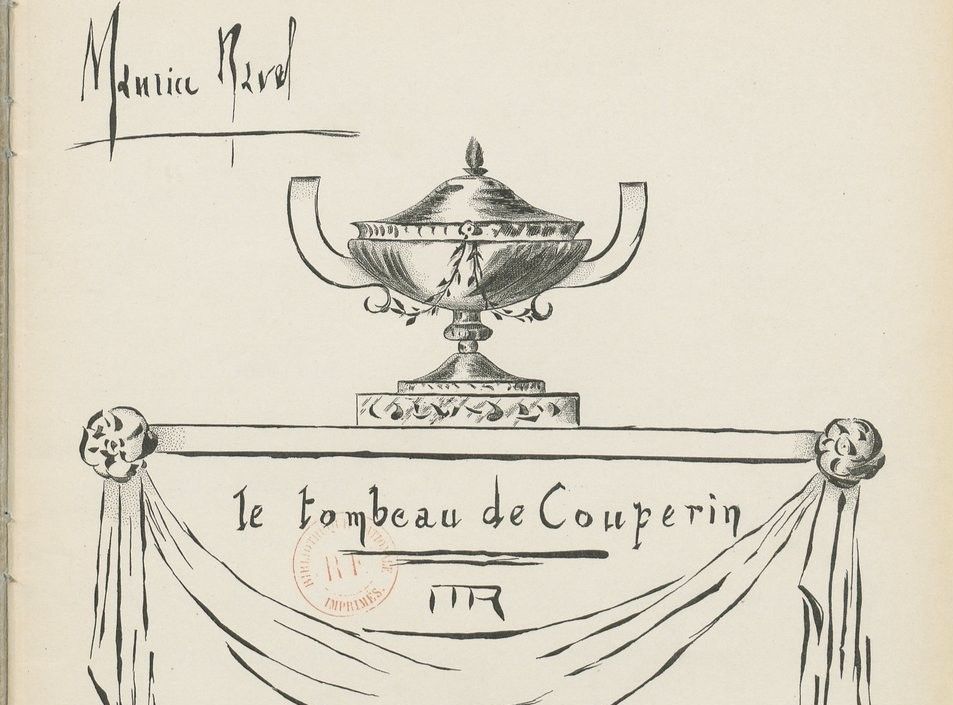Many listeners attest to strong connections between music and memory – after all, important life events often have a musical accompaniment. Composers through the centuries have been aware of this too. It can be heard especially in music marking one of life’s most emotionally resonant moments: the passing of others. From fulfilling funerary functions, to eulogising friends and fellow artists, or lamenting the waste of war: here are some of the finest examples of music written in mourning.

Royal elegies and funerals
The tradition of royal patronage has given us a rich body of work written for state funerals. When the 32-year-old Queen Mary II fell victim to the smallpox epidemic of late 1694, Henry Purcell brought together a March and Canzona, originally composed for Thomas Shadwell’s play The Libertine, with a choral setting of the Anglican funeral sentence Thou Knowest, Lord for her funeral the following year. While there is doubt as to what was actually played at the service, it is thought that Thou Knowest was performed at Purcell’s own funeral mere months later, after he died at 36.
Queen Caroline, consort to George II, was a longstanding supporter of Handel, who had given the monarchs’ daughters music lessons and composed the anthems – Zadok the Priest among them – for their coronations in 1727. When Caroline died ten years later, Handel penned the funeral anthem The Ways of Zion do Mourn, seeking to reflect their shared German heritage in the work’s nods to Lutheran church music.
When Paul Hindemith’s plans to perform in London on 20th January 1936 were scuppered by the death of George V, it turned into what the composer saw as an opportunity. The next day, he was asked by the BBC to write a commemorative piece to replace the performance they had intended to broadcast. Holed up in an office, it took Hindemith from 11am to 6pm to churn out Trauermusik, which became one of his most successful pieces. He said, drolly, “It turned out to be a nice piece… now I want to specialise in corpses.”
Artistic tributes
What more fitting way to mark the passing of a fellow artist than to make more art in their name? Russian composers contributed significantly to this genre of mourning music in their tradition of commemorative piano trios, started by Tchaikovsky in 1882 to celebrate the pianist Nikolai Rubinstein, who had died the previous year. Though Tchaikovsky expressed strong aversion to writing for the combination of piano, violin and cello when his patron originally suggested it, his opinion apparently softened when his friend and mentor died, and he deployed these instruments for the Piano Trio in A minor, dedicated “In Memory of a Great Artist“.
Rachmaninov’s first Trio élégiaque was influenced by Tchaikovsky’s piece and ends with a funeral march, but it was his second effort in this mode that was actually written in response to his Tchaikovsky’s passing. Tchaikovsky died in October 1893, mere days after his Sixth Symphony’s premiere, and the Trio élégiaque no. 2 is likewise modelled on the original Rubinstein tribute.
Anton Arensky’s first piano trio, written in memory of the cellist Karl Davidov, continued this tradition, but perhaps more notable is Dmitri Shostakovich’s Piano Trio no. 2, marking the unexpected death of his friend, the 41-year-old musicologist Ivan Sollertinsky, in 1944. German war atrocities were also on Shostakovich’s mind, manifesting in the macabre deployment of Jewish dance ideas in the finale, apparently a response to Soviet reports that the SS had forced death camp prisoners to dance on their own graves before shooting them.
Artistic tributes are by no means unique to Russians. Edvard Grieg composed a funeral march for piano for his 23-year-old composer friend Rikard Nordraak, a piece performed in orchestrated form at Grieg’s own funeral. Franz Liszt, meanwhile, used the pianistic medium to pay tribute to Richard Wagner with La lugubre gondola in 1883.
While Wagner and Liszt’s relationship had been varying – Liszt had facilitated Wagner’s escape from Germany after his involvement in the Dresden Uprising, but was vexed by his financial sponging – Liszt was there during Wagner’s last days in Venice. Liszt claimed to have had a premonition of Wagner’s death while watching black funeral gondolas floating on the water (Wagner was already in ill health) and titled his piece accordingly.
While Arvo Pärt and Benjamin Britten had no direct personal connection, the latter’s death inspired “inexplicable feelings of guilt” in Pärt, who was only just coming to appreciate what he termed the “unusual purity” of Britten’s music. He realised these feelings in the tolling bells and plangent descending strings of his Cantus in Memorium Benjamin Britten.
Composers have also written in tribute to non-musical artists. The posthumous exhibition of paintings by his friend Viktor Hartmann provided Modest Mussorgsky with the creative energy to write ten piano pieces depicting the canvases he saw. Mussorgsky lamented, “Why should a dog, a horse, a rat, live on and creatures like Hartmann must die!” But the composer himself did not live to see Pictures at an Exhibition published or performed. Belatedly, it was popularised by Maurice Ravel’s 1922 orchestral transcription.
When Gioachino Rossini died in 1868, Verdi sought to honour him with a Requiem Mass comprised of contributions by Italy’s leading composers, with Verdi writing the final movement. The project didn’t come to fruition in Verdi’s lifetime, but he seems to have intuited what would come next when asked, regarding Rossini’s reputation: “When the other, which is comparable with it, that of Manzoni, exists no longer, what will remain for us?” One of Italy’s literary titans, Alessandro Manzoni, died in 1873, and Verdi’s famous Requiem for him premiered in 1874.
Alban Berg’s final complete work, a violin concerto finished in the summer of 1935 before his death in December, was commissioned by the violinist Louis Krasner, but it bore the dedication “To the memory of an angel”. Manon Gropius, daughter of Gustav Mahler’s widow Alma and the architect Walter Gropius, died of polio in April of that year, and had been due to debut as an angel in a theatre production of Max Reinhardt’s Everyman.
John Tavener’s Song for Athene includes the words “May flights of angels sing thee to thy rest”, a version of what Horatio says to the dead prince in Hamlet. This text was combined with elements of Greek Orthodox Liturgy, and the piece was written to commemorate another actress, Athene Harriadis, daughter of Tavener’s family friends, in 1993. It was not actually performed at Harriadis’s funeral, but at that of another of Tavener’s friends, Princess Diana, in 1997. The service was broadcast to 2.5 billion people, leading to Song for Athene becoming his best-known work.
Wartime dedications
In individual instances of loss or as more general statements, the tragedy of life lost in war has been a preoccupation of many composers. Funerailles, the seventh piece in Liszt’s Harmonies poétiques et religieuses, bears the subtitle “October 1849”. Once believed to allude to the death of Fryderyck Chopin, this marker actually concerns Count Lajos Batthyány, the first Hungarian Prime Minister, who was executed by the Austrian authorities eleven days previously for his role in the Hungarian War of Independence. Liszt lost close friends in this conflict, and the piece’s heroic funeral march pays tribute to them.
Other 19th-century revolutionaries are musically elegised in the form of Hector Berlioz’s Grande messe des morts, a requiem for the casualties of the 1830 July Revolution in France, written as a government commission. Premiered at the Hôtel des Invalides, a facility for wounded soldiers, in 1837, it was epic in scale, with Berlioz calling for 400 performers (and with instructions for up to 800 singers).
The 17th-century musical tradition of the tombeau – ‘memorial’ or ‘tomb’ – provided Ravel with the formal means to respond to the personal and national losses of the First World War. Le tombeau de Couperin names the Baroque composer François Couperin, but its six movements are each dedicated to friends who died on the frontlines. Ravel, who drove ambulances in the war, responded to those surprised at the work’s somewhat light-hearted tone by observing, “The dead are sad enough, in their eternal silence.”
During the Second World War, Maurice Duruflé venerated his friend, the promising composer Jehan Alain, who died in battle aged 29, by quoting from his work in Prélude et Fugue sur le nom d’Alain. But it may have taken some years for the sheer loss of the conflict to manifest in more overarching musical memorials. Benjamin Britten had considered writing an oratorio for the victims of Hiroshima and a Requiem to mark Gandhi’s 1948 assassination – but it was a commission that finally prompted his War Requiem.
Dedicated “in loving memory” to three friends who had been killed and one whose later suicide was the likely result of his wartime trauma, Britten’s work contrasts a Latin mass with nine poems by Wilfred Owen and marked the reconsecration of Coventry Cathedral in 1961, previously destroyed in a bombing raid.
It was the Polish composer Krzysztof Penderecki who finally paid tribute to the victims of the atomic bomb with his Threnody for the Victims of Hiroshima. However, his piece for 52 strings, making unsettling use of microtones and extended techniques, was originally called 8’37” in tribute to John Cage. It wasn’t until after the premiere that Penderecki dedicated the piece to Hiroshima, a move which reflected his growing interest in traumatic histories. He said: “Let the Threnody express my firm belief that the sacrifice of Hiroshima will never be forgotten and lost.”


